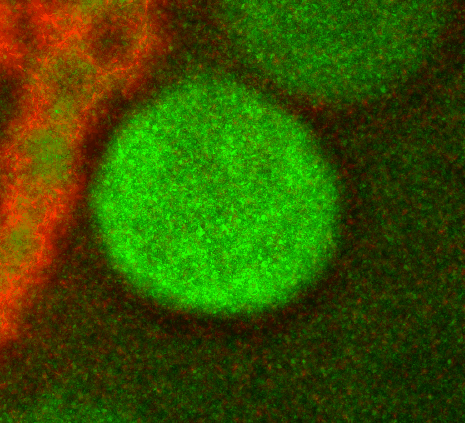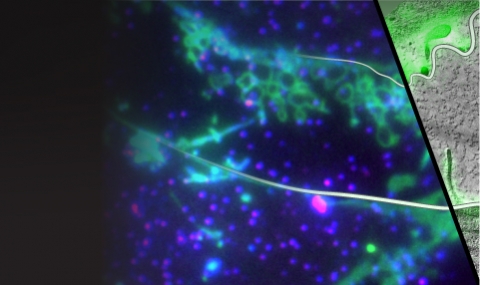How do fusion and exocytosis mechanisms adapt in exocrine tissues to accommodate large secretory vesicles while maintaining membrane homeostasis?
Various vertebrate secretory glands, such as the exocrine pancreas and the lung goblet cells, package their cargo in large vesicles (LSVs). The diameter of these vesicles ranges from 1-10µm, roughly the size of a yeast cell. The membrane surface area and internal volume of these vesicles are orders of magnitude greater than those of conventional vesicles (30-500nm in diameter), posing formidable challenges to vesicle biogenesis, trafficking, fusion, content release, and homeostasis of the limited apical membrane. We asked how cells compensate for the large amounts of membrane added by LSVs to the cell surface. By combining fly and mouse genetics with advanced imaging techniques, including 3D CLEM, we found that when LSVs fuse with the apical surface, they do not incorporate into or detach from the surface like smaller vesicles. Instead, LSVs stay connected to the surface through dynamic fusion pores that expand, stabilize, and constrict by a dedicated protein machinery that includes the I-BAR protein Missing-in-Metastasis (MIM)1.
Moreover, actomyosin assembly and contractility on the LSV fold the membrane such that the content is extruded from the vesicle without integrating it into the apical surface. We also show that diffusion of proteins and lipids between the vesicle and apical membranes becomes restricted after fusion and that the empty folded membrane is eventually retrieved by clathrin-mediated endocytosis. Thus, apical membrane homeostasis is maintained by mechanochemical sequestration of the LSV membrane2. Our work uncovered an entirely overlooked mode of exocytosis, opening exciting new research avenues into the molecular mechanism underlying LSV membrane remodeling in the context of exocrine tissues.

Secretory giant vesicles coated in actin (red), releasing mucin (green) in the lumen of Drosophila salivary gland. Video by Tom Biton


